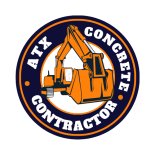Concrete resurfacing stands as a transformative solution in the realm of construction and renovation, breathing new life into worn-out surfaces. Whether aiming to revamp a weathered driveway, a faded patio, or a deteriorating floor, this method offers a cost-effective and efficient way to renew the appearance and functionality of concrete surfaces. In this comprehensive guide, we’ll delve into the purpose, process, benefits, and considerations surrounding concrete resurfacing, unveiling its potential to revitalize spaces and enhance their longevity.
Understanding Concrete Resurfacing
Concrete, despite its durability, is susceptible to wear and tear over time due to various factors such as weather conditions, usage, and age. Resurfacing, as the name suggests, involves applying a new layer of material onto existing concrete surfaces. This method aims not only to enhance aesthetics but also to reinforce structural integrity, addressing cracks, stains, and imperfections.
Purpose of Concrete Resurfacing
Concrete resurfacing serves as a transformative process that not only enhances aesthetics but also reinforces the structural integrity of concrete surfaces. It offers a spectrum of options, empowering homeowners and designers to create visually striking environments through techniques such as staining, decorative overlays, stamping, and scoring.
Aesthetic Enhancement: Staining techniques, whether acid or water-based, allow for a wide range of colors, mimicking natural stone or bespoke designs. Decorative overlays and micro toppings provide versatility for textures, patterns, and intricate designs. Stamping and scoring techniques replicate the appearance of materials like brick or wood, elevating surface aesthetics.
Structural Restoration: Resurfacing doesn’t just focus on visual improvements; it addresses underlying structural issues. Crack repair, spalling correction, and surface leveling ensure a renewed surface that’s both visually appealing and resilient.
Cost-Effective Solution: Concrete resurfacing stands as a pragmatic and cost-efficient alternative to complete surface replacement. It reduces the need for extensive demolition and removal, cutting down on labor, time, and material costs.
Surface Protection: Resurfacing provides a protective shield against elements and daily wear. Sealed resurfaced surfaces repel stains, and enhance durability against abrasions, impacts, and harsh weather conditions.
Sustainability and Environmental Impact: Opting for concrete resurfacing aligns with sustainable construction practices. It generates less waste, conserves raw materials, reduces energy consumption, and extends the lifespan of concrete surfaces, contributing to a more eco-friendly approach to construction.
The Process of Concrete Resurfacing
Renewing concrete surfaces through resurfacing is a meticulous endeavor that involves several integral steps, each contributing to the overall quality and durability of the finished result.
Surface Preparation: This foundational stage is critical. Cleaning involves the removal of debris, dirt, and grease, ensuring a pristine surface for the overlay material. Repairing imperfections, such as cracks or surface irregularities, requires skilled attention to detail, using specialized fillers to create a uniform substrate.
Priming for Adhesion: Establishing a robust bond between the existing surface and the overlay material is essential. Applying a bonding agent or primer optimizes adhesion, preventing delamination or separation over time.
Application of Overlay: The choice of overlay material is crucial, considering factors like the desired finish, functionality, and the project’s specific requirements. Skilled application techniques are employed to ensure even coverage and proper thickness across the entire area.
Finishing Touches: Once the overlay material sets, additional decorative elements, such as staining, stamping, or scoring techniques, can be incorporated. These techniques lend texture, patterns, or customized designs, elevating the aesthetic appeal of the resurfaced surface.
Sealing and Curing: Applying a protective sealant shields the surface against stains, abrasions, and moisture, enhancing durability and simplifying maintenance. Allowing ample time for proper curing ensures that the overlay material attains its maximum strength and resilience.
Expanding on each step in the resurfacing process highlights the meticulous attention required at every stage to achieve a visually appealing, durable, and functional renewed surface.
Benefits of Concrete Resurfacing
Enhanced Aesthetics: Transforms dull surfaces into visually appealing areas, offering a wide range of design possibilities.
Increased Durability: Reinforces the structural integrity of the concrete, extending its lifespan and minimizing future maintenance needs.
Customization Options: Allows for customization through various textures, colors, and patterns, catering to diverse preferences and design schemes.
Environmentally Friendly: Compared to full replacement, resurfacing generates less waste and requires fewer raw materials, making it an eco-conscious choice.
Considerations and Maintenance
Proper maintenance is key to prolonging the lifespan of resurfaced concrete. Regular cleaning, avoiding harsh chemicals, and promptly addressing any spills or damages can significantly contribute to its longevity.
Conclusion
In conclusion, concrete resurfacing emerges as a versatile solution that combines functionality with aesthetic appeal. Its ability to revive worn-out surfaces while providing a cost-effective alternative to replacement makes it a preferred choice for homeowners and businesses alike. By understanding the purpose, process, and benefits of concrete resurfacing, individuals can make informed decisions to renew and revitalize their spaces.
